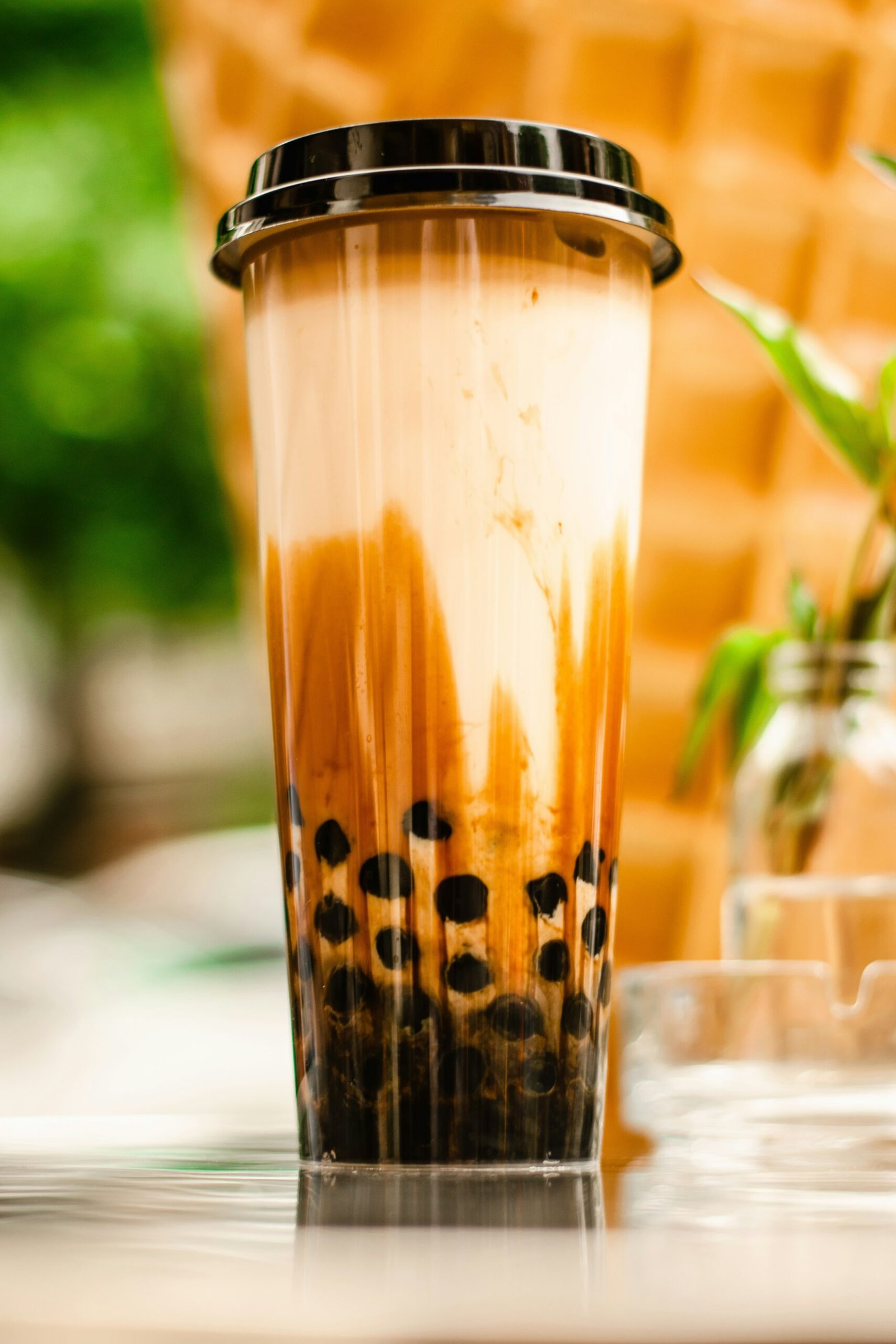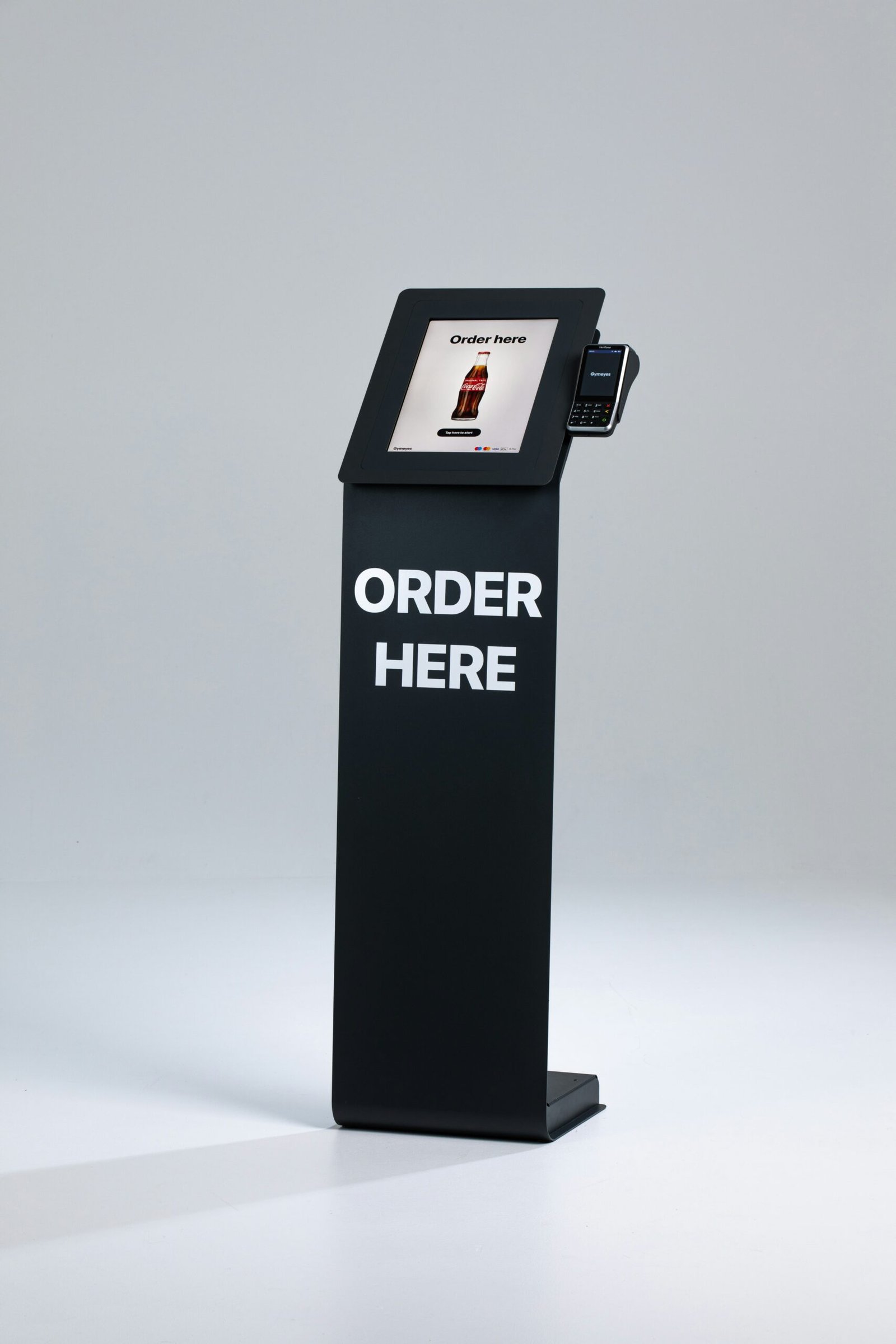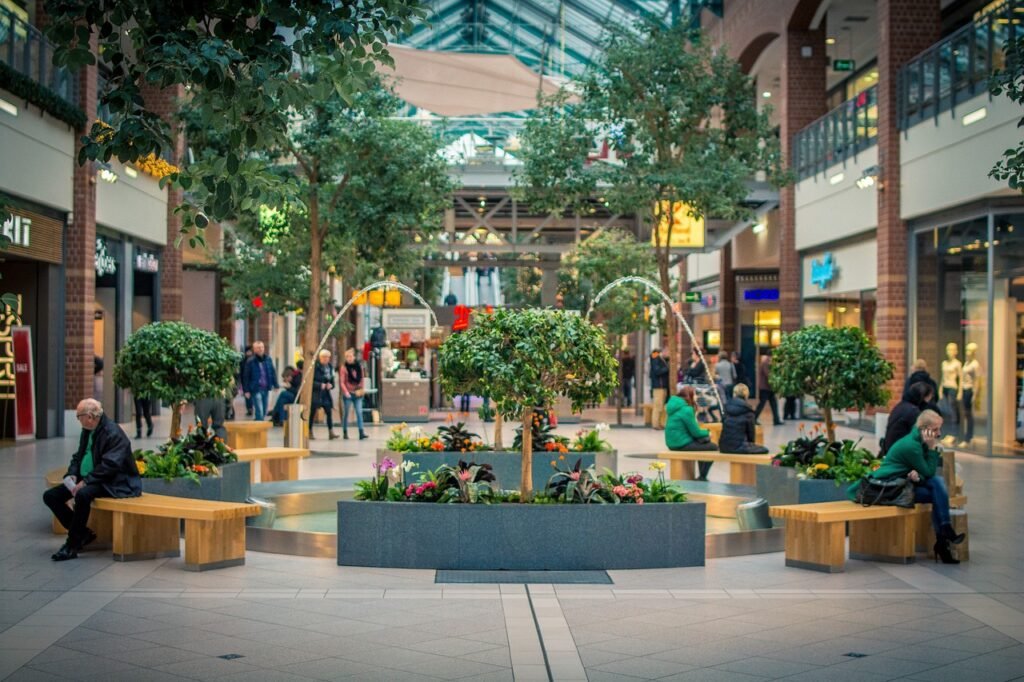Bubble tea, also known as boba tea, has transcended its origins in Taiwan to become a global sensation, capturing the hearts and taste buds of people around the world.
This unique beverage, characterized by its chewy tapioca pearls and a variety of flavors, has paved the way for innovative and visually appealing bubble tea kiosks.
These kiosks are not just points of sale; they are experiential hubs that contribute significantly to the overall enjoyment of bubble tea.
The concept of bubble tea dates back to the 1980s in Taiwan, where it quickly gained popularity due to its distinctive texture and customizable flavor profiles.
Over the past few decades, bubble tea has evolved from a local favorite into an international phenomenon. This expansion has brought forth the need for strategic and creative kiosk designs that not only serve the product but also captivate and engage customers.
The importance of kiosk design in the bubble tea industry cannot be overstated. A well-designed kiosk can attract customers, serve as a branding tool, and enhance the overall bubble tea experience.
Modern bubble tea kiosks are often characterized by their vibrant colors, eye-catching graphics, and ergonomic layouts. These elements work together to create a welcoming atmosphere that encourages customers to linger and enjoy their beverages.
Moreover, the design of a bubble tea kiosk plays a crucial role in differentiating one brand from another in a competitive market.
As bubble tea continues to grow in popularity, the demand for unique and innovative kiosk designs has also increased. These designs not only reflect the brand’s identity but also cater to the preferences and expectations of diverse customer bases around the world.
In this blog post, we will explore various bubble tea kiosk designs from different parts of the globe, showcasing how creativity and cultural influences shape the bubble tea experience.
Join us as we delve into the fascinating world of bubble tea kiosks and discover the artistry behind these mini architectural marvels.
The design of bubble tea kiosks around the world is profoundly influenced by the rich tapestry of local cultures. These cultural elements manifest in various ways, including traditional architecture, color schemes, and local art, making each kiosk a unique reflection of its surroundings.
In Asia, where bubble tea originated, kiosks often incorporate traditional architectural styles. For example, in Taiwan, you may find kiosks with features reminiscent of traditional tea houses, such as wooden structures, intricate carvings, and paper lanterns. These elements not only attract customers but also provide a sense of authenticity and cultural pride.
In contrast, European bubble tea kiosks tend to blend contemporary design with subtle nods to local heritage. In cities like Paris and Berlin, sleek, modern kiosks often feature minimalist designs with clean lines and neutral color palettes.
However, elements like local art pieces or traditional motifs can be found subtly integrated into the design, creating a harmonious balance between modernity and cultural homage. This approach not only appeals to aesthetic sensibilities but also resonates with the local populace by incorporating familiar cultural references.
In the United States, the design of bubble tea kiosks often reflects a fusion of diverse cultural influences, mirroring the country’s melting pot identity. In cities such as New York and Los Angeles, kiosks might incorporate vibrant colors and eclectic decor, drawing inspiration from both Asian and Western aesthetics.
This fusion can be seen in the use of bold, eye-catching signage, graffiti art, or even pop culture references that resonate with a younger, more diverse customer base. By blending different cultural elements, these kiosks create a unique and inviting atmosphere that appeals to a broad audience.
Overall, the design of bubble tea kiosks worldwide illustrates how cultural influences shape and define commercial spaces. By incorporating traditional architecture, local art, and culturally significant color schemes, these kiosks not only stand out visually but also create a deeper connection with their customers.
This cultural sensitivity in design ensures that bubble tea kiosks are not just places to enjoy a beverage but also spaces that celebrate and reflect the diversity of the world’s cultures.
Innovative Design Trends in Asia
Asia remains at the forefront of bubble tea kiosk designs, with countries like Taiwan, Japan, and South Korea setting the bar high through innovative aesthetics and functional features.
One prominent trend that has emerged is the minimalist design approach. By emphasizing simplicity and clean lines, many kiosks create an inviting and uncluttered space for customers.
This minimalist aesthetic is often complemented by neutral color palettes and natural materials, enhancing the overall sense of calm and sophistication.
High-tech features are another hallmark of modern bubble tea kiosks in Asia. In Japan, for instance, some kiosks incorporate advanced ordering systems that utilize touchscreen technology, allowing customers to customize their orders with ease.
Taiwan has also embraced this trend, with some kiosks featuring automated tea brewing machines that ensure consistency and reduce wait times.
These technological advancements not only streamline operations but also offer a futuristic and efficient experience for customers.
Eco-friendly materials are increasingly being used in bubble tea kiosk designs across Asia.
In South Korea, several establishments have adopted sustainable practices by using recycled wood, biodegradable cups, and energy-efficient lighting. This shift towards eco-conscious design reflects a growing awareness of environmental issues and a commitment to sustainability within the industry.
By incorporating these green elements, kiosks not only reduce their carbon footprint but also appeal to a more environmentally conscious consumer base.
Standout examples of innovative kiosk designs include Taiwan’s “TeaMagic,” which combines sleek, minimalist aesthetics with cutting-edge technology.
In Japan, “BubbleOn” showcases an elegant, eco-friendly design with its use of recycled materials and energy-efficient systems. Meanwhile, South Korea’s “EcoBubble” emphasizes sustainability with its biodegradable packaging and green building materials.
These innovative design trends in Asia not only enhance the visual appeal and functionality of bubble tea kiosks but also set a benchmark for the industry globally.
As these trends continue to evolve, they will undoubtedly influence bubble tea kiosk designs in other parts of the world, promoting a blend of aesthetics, technology, and sustainability.
When it comes to bubble tea kiosk designs in Europe, the emphasis is often on elegance and functionality. European countries like France, the United Kingdom, and Germany have incorporated modern design principles to create kiosks that are not only visually appealing but also efficient in their use of space.
This approach ensures that customers enjoy a seamless and inviting experience.
Paris:
The Epitome of Chic
In Paris, bubble tea kiosks often reflect the city’s reputation for chic and sophisticated design.
These kiosks frequently feature clean lines, minimalist décor, and a subdued color palette that exudes elegance. The use of high-quality materials such as marble countertops and brass fixtures adds a touch of luxury.
Additionally, these kiosks are strategically designed to optimize space, allowing for smooth customer flow and efficient service.
The result is a cozy yet sophisticated atmosphere that invites customers to linger and enjoy their bubble tea in style.
London:
Blending Tradition and Modernity
London’s bubble tea kiosks often blend traditional British aesthetics with contemporary design elements.
This fusion creates a unique atmosphere that is both familiar and fresh. For instance, you might find kiosks that incorporate classic British motifs such as dark wood paneling and vintage-inspired lighting fixtures, alongside modern touches like sleek furniture and digital menu boards.
The emphasis on functionality is evident in the smart use of compact spaces, ensuring that even the smallest kiosks can efficiently serve a steady stream of customers.
This blend of old and new makes London’s bubble tea kiosks a delightful place to enjoy a refreshing drink.
Berlin:
Artistic and Functional
Berlin is known for its vibrant art scene, and this influence is evident in its bubble tea kiosk designs.
Kiosks in Berlin often feature artistic elements such as bold murals, avant-garde furniture, and innovative lighting.
These artistic touches are seamlessly integrated with functional design, ensuring that the kiosks are not only visually captivating but also highly efficient.
The layout typically includes well-organized workstations and customer areas, making the entire experience smooth and enjoyable.
Berlin’s bubble tea kiosks are a testament to the city’s ability to merge creativity with practicality.
Overall, European bubble tea kiosks successfully combine elegance and functionality to create inviting spaces that enhance the customer experience.
Whether in Paris, London, or Berlin, these kiosks reflect the unique cultural and design sensibilities of their respective cities while maintaining a focus on efficiency and style.
American Creativity and Boldness
In the United States, bubble tea kiosk designs are a testament to the country’s penchant for creativity and boldness.
American designers are constantly pushing the envelope to make their kiosks not only functional but also visually captivating.
These kiosks often feature vibrant colors and quirky themes that catch the eye and draw in customers.
From the bustling streets of New York to the sun-soaked avenues of Los Angeles and the eclectic neighborhoods of San Francisco, each city adds its unique flair to these bubble tea havens.
In New York, for instance, bubble tea kiosks frequently incorporate the city’s fast-paced, dynamic energy into their designs.
Bright neon lights and eye-catching murals can be seen adorning these kiosks, making them impossible to miss.
Interactive features like touchscreens for ordering and digital menu boards add a modern touch, catering to the tech-savvy clientele.
The use of bold, contrasting colors not only enhances the visual appeal but also reflects the diverse and vibrant culture of the city.
Los Angeles, with its laid-back yet glamorous vibe, brings a different kind of creativity to bubble tea kiosk designs.
Here, kiosks often embrace themes that celebrate the local culture, from Hollywood-inspired decor to beach-themed setups.
These designs frequently include elements such as palm tree motifs, surfboards, and even mini red carpets, offering customers a unique and memorable experience.
The use of pastel shades and artistic installations create an inviting atmosphere that resonates with the city’s artistic community.
Over in San Francisco, the approach to bubble tea kiosk design is equally innovative but with a tech-centric twist.
Many kiosks in this tech hub feature minimalist designs with sleek lines and modern aesthetics.
Interactive features are commonplace, ranging from augmented reality menus to app-based ordering systems.
The use of sustainable materials and eco-friendly design elements also reflects the city’s progressive values and commitment to environmental consciousness.
Overall, the bold and creative designs of bubble tea kiosks in the United States not only enhance the customer experience but also serve as a reflection of the diverse and dynamic culture that defines American cities.
Sustainability in Kiosk Design
The burgeoning trend of sustainability in bubble tea kiosk design reflects a broader global movement towards environmentally responsible business practices.
The implementation of eco-friendly materials, energy-efficient technologies, and sustainable methods have become pivotal in how modern kiosks are conceptualized and constructed.
This shift not only contributes to the preservation of the environment but also enhances the brand image and appeal to an increasingly eco-conscious consumer base.
One critical aspect of sustainable kiosk design is the choice of materials. Many kiosks are now being constructed from recycled or renewable resources.
For instance, bamboo, a rapidly renewable material, is frequently used for its durability and aesthetic appeal. Similarly, reclaimed wood and recycled metals are gaining popularity, offering a rustic yet modern look while reducing the environmental footprint.
Energy efficiency is another cornerstone of sustainable kiosk design. Innovations such as solar panels, LED lighting, and energy-efficient appliances are being integrated into kiosks to minimize energy consumption.
Solar panels, for example, can power various aspects of the kiosk, reducing reliance on non-renewable energy sources.
LED lights not only consume less electricity but also have a longer lifespan, thereby reducing waste.
Moreover, sustainable business practices are being adopted by bubble tea kiosk operators.
These include initiatives such as waste reduction programs, the use of biodegradable cups and straws, and the implementation of recycling systems.
Some kiosks have even gone a step further by introducing zero-waste policies, where every aspect of the operation is designed to minimize waste.
Examples of successful sustainable kiosk designs can be found around the globe. In Taiwan, the birthplace of bubble tea, many kiosks are leading the way with green designs that incorporate local, sustainable materials.
In Europe, several kiosks have adopted energy-efficient technologies and waste reduction practices, setting new standards for eco-friendly business operations.
In North America, the trend is swiftly catching on, with numerous kiosks showcasing innovative sustainable designs that resonate with the environmentally conscious consumer.
Customer Experience and Engagement
The design of bubble tea kiosks plays a crucial role in shaping customer experience and engagement.
An effective layout ensures that customers can easily navigate through the space, enhancing their overall satisfaction.
A well-thought-out design incorporates clear signage, intuitive pathways, and thoughtfully arranged elements such as the ordering counter, pick-up area, and seating.
This not only improves the flow of foot traffic but also minimizes wait times, contributing to a more pleasant and efficient customer experience.
Modern bubble tea kiosks are increasingly integrating digital technologies to further elevate customer engagement.
Mobile ordering systems, for example, allow customers to place their orders in advance and pick them up at their convenience, reducing the time spent waiting in line.
Interactive displays and digital menus provide dynamic and engaging ways for customers to explore different drink options and customizations, making the ordering process both informative and enjoyable.
Globally, various bubble tea kiosks exemplify customer-centric designs that prioritize user experience.
In Taiwan, the birthplace of bubble tea, kiosks often feature open layouts with clear visibility of the tea-making process, fostering a sense of transparency and trust.
In Japan, minimalist designs with sleek lines and strategic lighting create a calm and inviting atmosphere, encouraging customers to linger and enjoy their drinks.
Meanwhile, in bustling cities like New York and London, kiosks are designed with efficiency in mind, utilizing compact layouts and digital ordering kiosks to accommodate the fast-paced lifestyles of urban dwellers.
These examples demonstrate that well-designed bubble tea kiosks not only attract customers but also enhance their overall experience.
By combining thoughtful layouts with cutting-edge digital technologies, bubble tea vendors can create engaging environments that cater to the needs and preferences of their diverse customer base.
This approach not only drives customer satisfaction but also fosters brand loyalty, ensuring that customers return time and again for their favorite bubble tea experience.
Future Trends in Bubble Tea Kiosk Design
As the bubble tea industry continues to thrive globally, the design of bubble tea kiosks is expected to evolve in response to emerging technologies, shifting consumer preferences, and global design trends.
One significant trend is the integration of smart technologies to enhance customer experience.
For instance, kiosks equipped with self-service touchscreens and mobile app ordering systems are becoming increasingly common, offering convenience and efficiency.
These tech-savvy features not only streamline operations but also cater to the tech-oriented preferences of younger consumers.
Moreover, sustainability is becoming a central theme in kiosk design. The use of eco-friendly materials, energy-efficient appliances, and waste-reduction strategies will likely become standard practice.
This shift is driven by growing environmental consciousness among consumers and the broader movement towards sustainable business practices.
Designers are exploring innovative materials such as recycled plastics, bamboo, and other biodegradable options to construct kiosks that minimize environmental impact.
Another trend to watch is the emphasis on modular and flexible designs. As bubble tea brands expand into new markets, the need for adaptable kiosks that can be easily assembled, disassembled, and transported is increasing.
Modular designs allow for greater customization and scalability, enabling businesses to quickly respond to changing market demands and consumer preferences.
In terms of aesthetics, global design movements are influencing the visual identity of bubble tea kiosks.
Minimalist and contemporary styles, characterized by clean lines, neutral color palettes, and functional layouts, are gaining popularity.
Additionally, incorporating elements of local culture and art into kiosk design can create a unique and authentic brand experience, resonating with diverse consumer bases worldwide.
Industry experts predict that the future of bubble tea kiosk design will be defined by a harmonious blend of technology, sustainability, flexibility, and cultural relevance.
As these trends continue to shape the industry, bubble tea kiosks will not only serve as points of sale but also as embodiments of innovative and responsible design practices.



